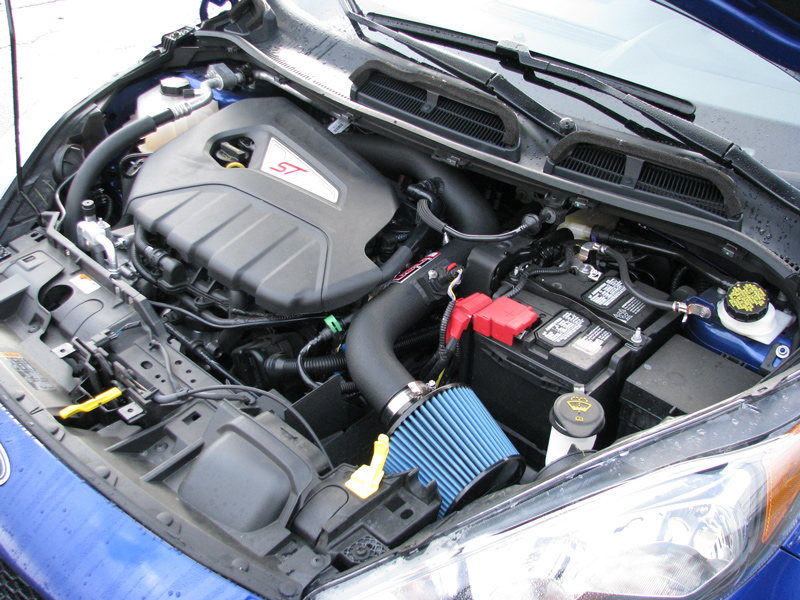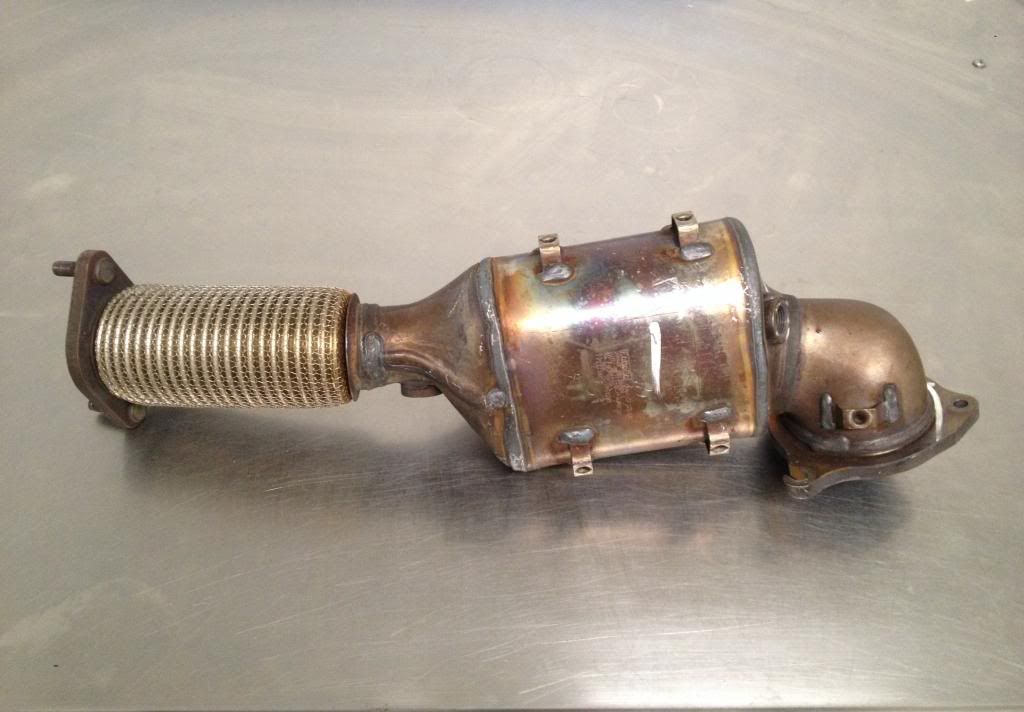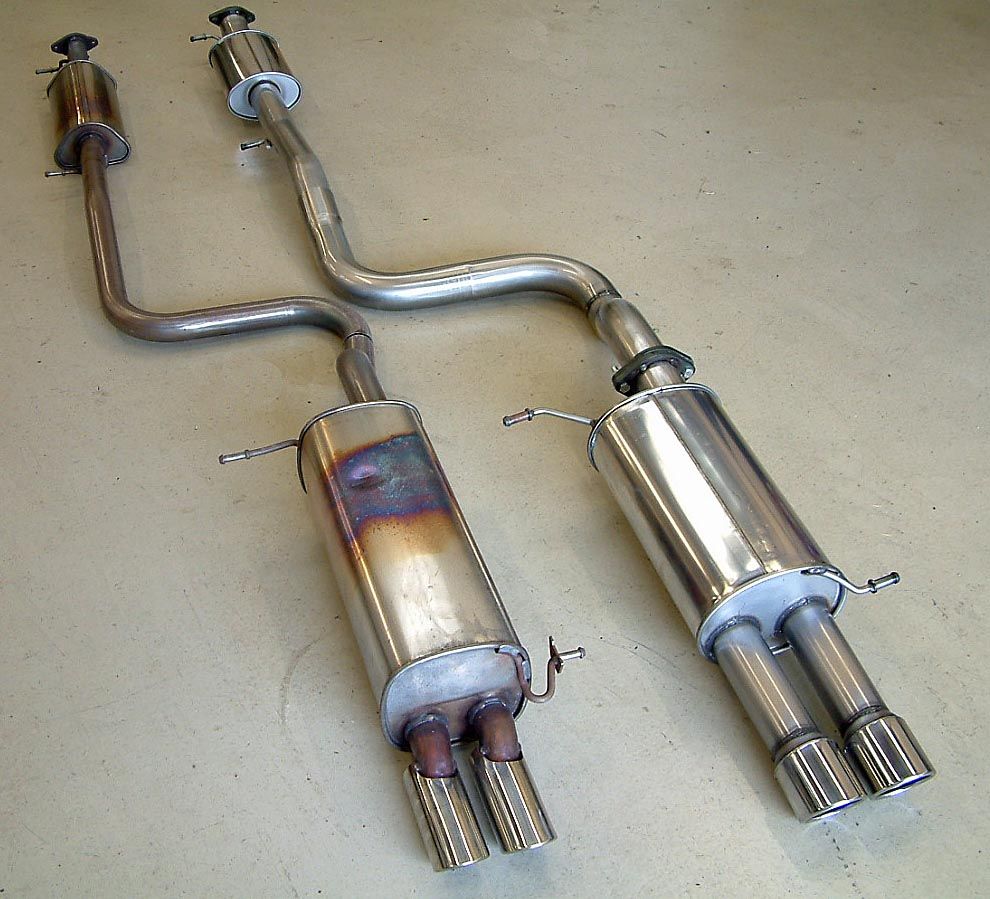This is a work in progress, so please excuse typos and clutter. I'll try to make it look pretty as I go.
So I have been noticing the same questions keep popping up, and to try and cut down on the clutter I'm going to be continually adding information to this thread so everyone can use this as a reference point. Now this wont mean much to some of you more experienced guys, but there are a lot of newbies or guys and gals who are just flat out new to modding a turbo'd car. A lot of this is just my personal experience/what I have seen from other users, especially in terms of an upgrade path. I'm just going to use "stages" for simplicity sake.
DISCLAIMER: Myself, other mods who add to this, and the forum itself are not liable for any damages caused from following this write up. YOU DO THIS AT YOUR OWN RISK! Whenever you push a car beyond the limits of the OEM equipment, you run the risk of breaking things, voiding your warranty, and costing yourself thousands of dollars.
So first things first, if you are completely new to tinkering with cars, I recommend you give this a read A beginners guide to modding cars. It will give you a decent foundation on which you can build.
Stage 0: Your car is stock, we all started here, some of us prefer to stay this way. It's good to actually drive your car in stock form for awhile, get comfortable with the stock power, the more you get a feel for the car, the more you will know what areas you want to improve on. Plus once you actually start doing things power wise, the difference will be more noticeable.
Stage 1 This will typically consist of a handheld tuner. For most of us here in the states, you have COBB's Accessport, SCT, as well as one or two others. A tuner will give you the best bang for your buck (aside from going big turbo), and is really the foundation to which you will build your mods on. A lot of guys ask "when is the right time to install one of these on my car." The answer is whenever you feel like it. I personally think the sooner, the better, that way the engine will continue to break in under those parameters.
Besides the performance boost you'll get, you can also monitor a number of "gauges," clear CELs, measure your 0-60 and 1/4 times, and even get an estimate of HP and TQ.
PRO TIP!! Start out monitoring Actual Air to Fuel ratios, actual boost, and oil temperature. Those are the 3 most important to watch in my humble opinion.![Like [like] [like]](/images/smilies/icon_smile_like.gif) (this mainly applies to the COBB AP as I don't know if the other hand held tuners have gauge reading capabilities)
(this mainly applies to the COBB AP as I don't know if the other hand held tuners have gauge reading capabilities)


Stage 2 Alright, so you did the tuner stuff and now your craving more. Your officially addicted to modifying cars, welcome to the club![Cheers [cheers] [cheers]](/images/smilies/icon_smile_cheers.gif)
The next logical step is to let the engine breathe better. An engine is basically just a giant air compressor, the more air you can get in, the more air you can get out, thus making more power. At this point, I'd recommend adding an intake and an upgraded FMIC (front mount intercooler)
Stage 3 Downpipes and cat back exhausts
So I have been noticing the same questions keep popping up, and to try and cut down on the clutter I'm going to be continually adding information to this thread so everyone can use this as a reference point. Now this wont mean much to some of you more experienced guys, but there are a lot of newbies or guys and gals who are just flat out new to modding a turbo'd car. A lot of this is just my personal experience/what I have seen from other users, especially in terms of an upgrade path. I'm just going to use "stages" for simplicity sake.
DISCLAIMER: Myself, other mods who add to this, and the forum itself are not liable for any damages caused from following this write up. YOU DO THIS AT YOUR OWN RISK! Whenever you push a car beyond the limits of the OEM equipment, you run the risk of breaking things, voiding your warranty, and costing yourself thousands of dollars.
So first things first, if you are completely new to tinkering with cars, I recommend you give this a read A beginners guide to modding cars. It will give you a decent foundation on which you can build.
Stage 0: Your car is stock, we all started here, some of us prefer to stay this way. It's good to actually drive your car in stock form for awhile, get comfortable with the stock power, the more you get a feel for the car, the more you will know what areas you want to improve on. Plus once you actually start doing things power wise, the difference will be more noticeable.
Stage 1 This will typically consist of a handheld tuner. For most of us here in the states, you have COBB's Accessport, SCT, as well as one or two others. A tuner will give you the best bang for your buck (aside from going big turbo), and is really the foundation to which you will build your mods on. A lot of guys ask "when is the right time to install one of these on my car." The answer is whenever you feel like it. I personally think the sooner, the better, that way the engine will continue to break in under those parameters.
Besides the performance boost you'll get, you can also monitor a number of "gauges," clear CELs, measure your 0-60 and 1/4 times, and even get an estimate of HP and TQ.
PRO TIP!! Start out monitoring Actual Air to Fuel ratios, actual boost, and oil temperature. Those are the 3 most important to watch in my humble opinion.

Stage 2 Alright, so you did the tuner stuff and now your craving more. Your officially addicted to modifying cars, welcome to the club
The next logical step is to let the engine breathe better. An engine is basically just a giant air compressor, the more air you can get in, the more air you can get out, thus making more power. At this point, I'd recommend adding an intake and an upgraded FMIC (front mount intercooler)
Intakes: There are 3 types of intakes for the Fiesta ST so far.
The first is a traditional short ram intake, or SRI. This replaces all the tubing up to the turbo inlet, and sits a cone filter in the engine bay.
The pros of a SRI: Quicker throttle response! Less restrictive piping and filter = more airflow into the motor!
The cons of a SRI: It sits in the engine bay, so you will suck in a little more hot air, which might keep you from making as much power as you otherwise could with colder air.
Companies that make these: Injen, FSwerks.

Next up is a CAI (cold air intake) Same concept here as the SRI, except this time the filter is placed either down further in the engine bay (towards the transmission) or placed into the wheel well to allow colder air to get into the engine.
Pros of a CAI: Colder air = more power than a SRI (typically)
Cons of a CAI: Throttle response wont be as good as a SRI, as the air has to travel further from the intake to the turbo.
Companies that make these: Mountune, COBB, 2JR.

Lastly is the modified stock air box, or "unlimited plenum intake." This is just what it sounds like. Most guys like to drop a highflow filter into their box, and then cut a couple holes on the bottom and side of the box to allow more air to get in.
Pros of the modified box: CHEAP! Looks stock if your worried about that (looking at you CA guys) Potentially gives you more power (I haven't seen conclusive evidence as of yet)
Cons of the modified box: I suspect these wont make as much power under the curve as an actual aftermarket intake.
Companies who make these: You

The pros of a SRI: Quicker throttle response! Less restrictive piping and filter = more airflow into the motor!
The cons of a SRI: It sits in the engine bay, so you will suck in a little more hot air, which might keep you from making as much power as you otherwise could with colder air.
Companies that make these: Injen, FSwerks.

Next up is a CAI (cold air intake) Same concept here as the SRI, except this time the filter is placed either down further in the engine bay (towards the transmission) or placed into the wheel well to allow colder air to get into the engine.
Pros of a CAI: Colder air = more power than a SRI (typically)
Cons of a CAI: Throttle response wont be as good as a SRI, as the air has to travel further from the intake to the turbo.
Companies that make these: Mountune, COBB, 2JR.

Lastly is the modified stock air box, or "unlimited plenum intake." This is just what it sounds like. Most guys like to drop a highflow filter into their box, and then cut a couple holes on the bottom and side of the box to allow more air to get in.
Pros of the modified box: CHEAP! Looks stock if your worried about that (looking at you CA guys) Potentially gives you more power (I haven't seen conclusive evidence as of yet)
Cons of the modified box: I suspect these wont make as much power under the curve as an actual aftermarket intake.
Companies who make these: You

Intercoolers:
The stock front mount intercooler does a pretty decent job at stock power levels. Once you start pumping up the power and bolting better flowing parts on though, this will become a restriction fast. Not to mention your car is running more advanced timing with the tuner installed on it, which in turn creates more heat. So at this point its probably a good idea to upgrade your cooling as well as give yourself some additional flow. Aftermarket intercoolers also have a tendency to cool off faster after heat soaking (heat soaking is when your car is sitting still after a pull or beating on it, the intercooler has no cool air blowing through it, thus it gets hot and reduces performance.)
The basic concept behind an upgraded intercooler is there is more surface area compared to stock, which means when your moving, fresh air is hitting a larger area and increasing the cooling effect.
Companies who make these: ATP, Levels, COBB, HPD, Mountune, Airtek, Forge.

The basic concept behind an upgraded intercooler is there is more surface area compared to stock, which means when your moving, fresh air is hitting a larger area and increasing the cooling effect.
Companies who make these: ATP, Levels, COBB, HPD, Mountune, Airtek, Forge.

Stage 3 Downpipes and cat back exhausts
Downpipes
The stock downpipe is probably one of the worst designed things on the entire car. It kills flow, which in turn slows your turbos responsiveness, and robs you of HP and TQ. You basically want as few restrictions as possible on a turbo car.
Now there are two kinds of downpipes, one that has no catalytic converter, and one that has a high flow catalytic converter.
Pros of no cat: More power and quicker turbo spool (less restrictions, duh)
Cons of no cat: 100% illegal, it is a federal law that a vehicle have a catalytic converter. Technically, you aren't allowed to ever replace your stock cat unless it fails, so no matter what it is illegal. So unless your using this car for strictly track use, you might want to go with the high flow option. Having the high flow cat is just the lesser of two evils. You will also notice a lot more exhaust fumes, the smell is sometimes too much for people.
Companies that make these: Milltek, 2JR, CP-e, COBB, Scorpion performance, Cobra sport, ATP
Catless

High flow cat

Stock downpipe

Now there are two kinds of downpipes, one that has no catalytic converter, and one that has a high flow catalytic converter.
Pros of no cat: More power and quicker turbo spool (less restrictions, duh)
Cons of no cat: 100% illegal, it is a federal law that a vehicle have a catalytic converter. Technically, you aren't allowed to ever replace your stock cat unless it fails, so no matter what it is illegal. So unless your using this car for strictly track use, you might want to go with the high flow option. Having the high flow cat is just the lesser of two evils. You will also notice a lot more exhaust fumes, the smell is sometimes too much for people.
Companies that make these: Milltek, 2JR, CP-e, COBB, Scorpion performance, Cobra sport, ATP
Catless

High flow cat

Stock downpipe

Catback exhausts
The concept behind these is basically the same as the downpipe. You're replacing it with a bigger pipe, and less restrictive muffler/resonators. It seems that the stock exhaust does a pretty good job, and there really isn't much left on the table in terms of peak power by replacing it. You'll probably get a little more "under the curve" power, and it will sound better than the stock exhaust. Louder, but better.
Companies that make these: Magnaflow, Borla, Ford racing, CP-e, 2JR, COBB, Milltek, MRT, Scorpion, Cobra, FSwerks
Stock CBE (cat back exhaust vs aftermakret)

Companies that make these: Magnaflow, Borla, Ford racing, CP-e, 2JR, COBB, Milltek, MRT, Scorpion, Cobra, FSwerks
Stock CBE (cat back exhaust vs aftermakret)




